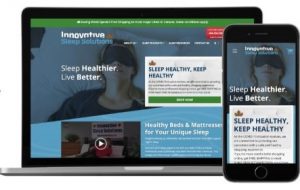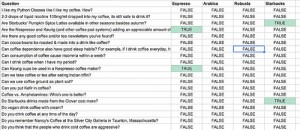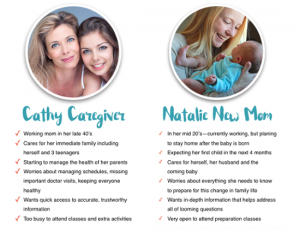Facebook stands as the giant among other social media platforms with over one and a half BILLION active users. For this reason, it’s no surprise why so many businesses choose to use it as their go-to social media platform. Despite the heavy business usage, many people are still confused why a post on a page with 1000 followers can receive less than 100 views. To combat this, you’ll need to learn about fighting the algorithm, because Facebook’s greatest strength is your biggest weakness.
As many people know, one of the big attractions of Facebook for businesses is the powerful advertising platform that lets you target users with the most detailed targeting down to their perceived political views. What many users don’t know is that Facebook’s targeting goes beyond what you select in your ads and this kind of targeting directly effects regular posts you or your business are making.
Hidden Targeting Methods
Facebook’s target method seeks to fulfill the portion of their mission statement that says, “To share and express what matters to them.” Notice the strong emphasis on “What matters to them.” The algorithm is built to curate a news feed to each individual person on Facebook that’s built out of what matters to that user.
To do this, Facebook spends a lot of time watching every decision you make when you’re online;
- What types of post you engage with
- How you’re engaging with those posts
- How you’re watching videos
- What kind of videos you’re watching
These are just four examples of thousands of data points they monitor to try and build the best user experience, it even gets as detailed as noting the volume you watch videos at. Once Facebook compiles all of that information, it uses it to create a relevancy score for every post you see on your news feed then organizes those posts based on that score.
How it Effects Your Business
The idea behind why Facebook shows you certain posts is fairly simple, it comes down to the relevancy score, but trying to impact that score can be very difficult. While there are thousands of data points the score is based off, there are four key points that have the biggest impact on whether or not your content appears on your followers news feeds:
- Who posted it – The page or user that’s sharing the content
- What type of post it is – Whether it’s a link, text, photo, video, or live video
- How many interactions the post has – The number of reactions to that piece of content
- The time relevance of the post – When the piece was originally shared on Facebook
Out of these four points, you only have a big impact on two of them which narrows where you should focus your efforts.
Playing with the Hand You’re Dealt
Of the four key variables in your posts relevancy score, you have the highest direct impact on the type of post and the time relevance of the post.
The Type of Post
In terms of the type of post, you should evaluate your audience; do they like to watch videos, listen to audio clips, read simple text? Identify that and leverage it to your advantage, focus on that type of content and master it!
One of the byproducts of this algorithm is that the types of posts that show up higher have become somewhat uniform. In descending order from most interaction to least, the following posts will get you the most interactions:
- Live Videos – Any live video that’s taking place
- Videos – Any post containing a video of varying lengths
- Images – A text containing a manually uploaded photo or video
- Links – Any post containing a link with an automatically generated preview
- Text Posts – Any plain text post

By leveraging a combination but focusing on the visual posts you’ll not only engage varying segments of your audience but you’ll also reach them more consistently.
The Time Relevance
The time relevance of your post plays a key factor in the relevancy score of your content. This specific factor takes into account a number of different aspects relating to time, for example; when you posted, when the user last logged on, or how many times your content was posted. Each of these individual pieces, and more, influence your relevancy score in different ways.
First, the algorithm looks at how recent your content is. Like Google, Facebook loves fresh content that’s new and exciting and therefore gives some priority to new things being posted. Because of this, the first time you share a new image, it will get a lot more attention than the second or third.
Next, the algorithm takes into account how often the user logs onto Facebook to look at their news feed. The content that’s placed in front of someone who logs on every hour is drastically different than someone who logs in once a week. In the case of the hourly person, they’ll see only the timeliest content because the algorithm knows they’ll be back for new content soon. In the case of the weekly person, they may see older posts that have a higher relevance to them because they haven’t been on in a while.
Finally, Facebook’s algorithm looks at how many times, and how often content has been shared. When multiple friends share the same video, Facebook simply labels that as “John and 8 others shared this video.” While it does lump people together, it’s a signal that the content is particularly good and will more than likely show up on your feed! This emphasizes the importance of creating good, share-worthy content that your followers enjoy.
Trying to Stack the Deck
While we’ve looked at the two main factors you can influence in your posts, there are two other factors that you have less control over but still have a big impact on your relevancy score. As would be expected, if someone more influential than you share your post, it will garner much more attention. Conversely, if you share a post that goes viral, it’s obviously shared to many more people!
Changing the Who
In 2017, we’ve seen some major buzz around the phrase “influence marketing.” In the case of Facebook, there’s no exception. While you may not have direct control over who’s posting your content, if you can get an influencer to share it then it’s going to have a major boost in reach! Always remember, if you’re trying to choose an influencer, look for someone who’s got a large following, and lots of interaction on their posts!

Getting Interactions on Your Posts
The final influencer on your relevancy score, and another that you can’t directly control, are the interactions on your posts. Specifically effecting this variable requires and a lot deeper thought, look at the content that you’re sharing on your social profiles and compare that to your audience. Is it something they would like?
Quality content should always come first and if you’re producing top-notch pieces to share on your social channels, the interactions should follow! This may start out small at first but, it has a snowball effect that gains momentum over time. Focus on great content and the two pieces of your relevancy score you can influence and the interactions will follow.
Fighting Back Against the Facebook Algorithm
Facebook’s algorithm is often the showstopper, the gatekeeper, or the buzzkill of your digital marketing but it doesn’t have to be! Whenever you’re crafting new content pieces or preparing a new post, use a mental checklist for yourself. Evaluate if it’s something you audience would be interested in, if it’s a relevant type of post for that information, and if it’s relevant to be sharing at that specific time!

With good practice and time, your relevancy score will steadily improve and your content will continually reach more and more people. What’s your favorite tactic for reaching your customers on Facebook?
Digital & Social Articles on Business 2 Community(81)








